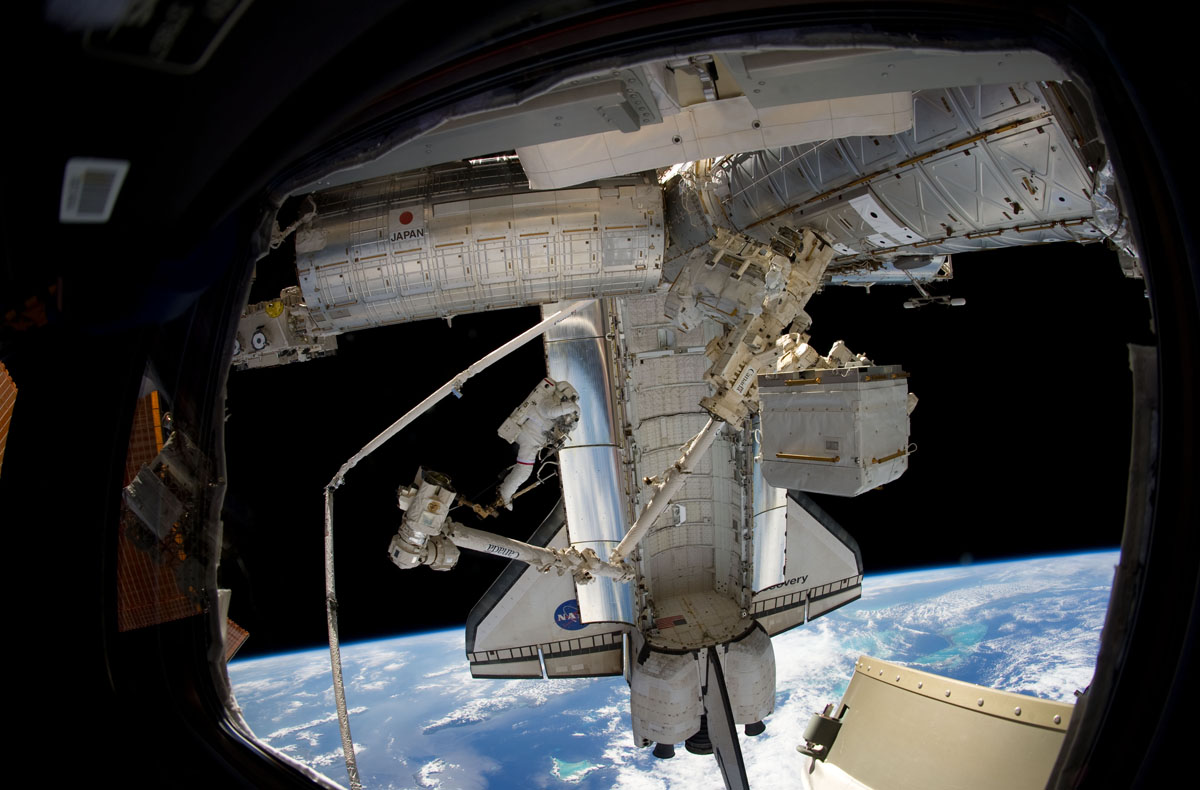Astronauts Tackle Big Unpacking Job on Space Station

HOUSTON – Astronauts on the International Space Station and shuttle Discovery will tackle a busy day of unpacking in orbit today (March 4), after enjoying a short break from work yesterday.
Discovery's six-astronaut crew attached a new storage module, called the Permanent Multipurpose Module (PMM), to the space station earlier this week. The large space closet was attached to the bottom of the U.S. Harmony node to give the station's residents extra storage space for hardware, spare parts and science experiments.
But while the station's new storage room completes NASA's contribution to the assembly of the space station, there's more work ahead. The module is packed full of critical supplies, including about 6,500 pounds (over 2,900 kilograms) of cargo for six astronauts and cosmonauts living on the orbiting outpost.
The cargo module, originally called Leonardo, is about the size of a small bus and is attached to the bottom – or Earth-facing – side of the station's U.S. segment. It was built in Italy for NASA to serve as a portable cargo pod for ferrying supplies to and from the station, but NASA refitted it to serve as a permanent room on the orbiting lab. [Gallery: Building the International Space Station]
The storage module also contained a humanoid robot, called Robonaut 2, which is designed to serve as an astronaut assistant in space. The robot will be tested by space station crews eventually, but for now is being kept in its foam case for safekeeping, the astronauts have said.
The astronauts have spent several days moving cargo into the station from the new storage room and Discovery's middeck. That work will continue today, and will take up majority of the day's tasks, mission managers said.
Flight controllers here at NASA's Johnson Space Center also decided yesterday to extend Discovery's STS-133 mission – giving the orbiter a total of 13 days on orbit for its final flight before retirement.
Get the Space.com Newsletter
Breaking space news, the latest updates on rocket launches, skywatching events and more!
Following this mission, Discovery will be retired from service after 39 trips into space, including 13 visits to the International Space Station. NASA has two more shuttle missions planned – Endeavour in April and Atlantis in June – before bringing its 30-year space shuttle program to an end.
With the mission extension, Discovery is now scheduled to undock from the space station on Monday (March 7) and land on Wednesday (March 9) at the Kennedy Space Center in Florida.
You can follow SPACE.com Staff Writer Denise Chow on Twitter @denisechow as she covers Discovery's final space voyage from NASA's Johnson Space Center in Houston. Visit SPACE.com for complete coverage of Discovery's final mission STS-133.
Join our Space Forums to keep talking space on the latest missions, night sky and more! And if you have a news tip, correction or comment, let us know at: community@space.com.

Denise Chow is a former Space.com staff writer who then worked as assistant managing editor at Live Science before moving to NBC News as a science reporter, where she focuses on general science and climate change. She spent two years with Space.com, writing about rocket launches and covering NASA's final three space shuttle missions, before joining the Live Science team in 2013. A Canadian transplant, Denise has a bachelor's degree from the University of Toronto, and a master's degree in journalism from New York University. At NBC News, Denise covers general science and climate change.









